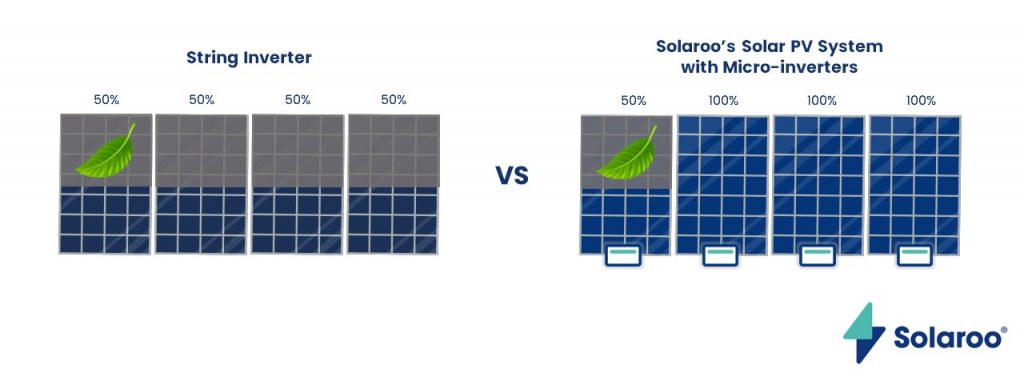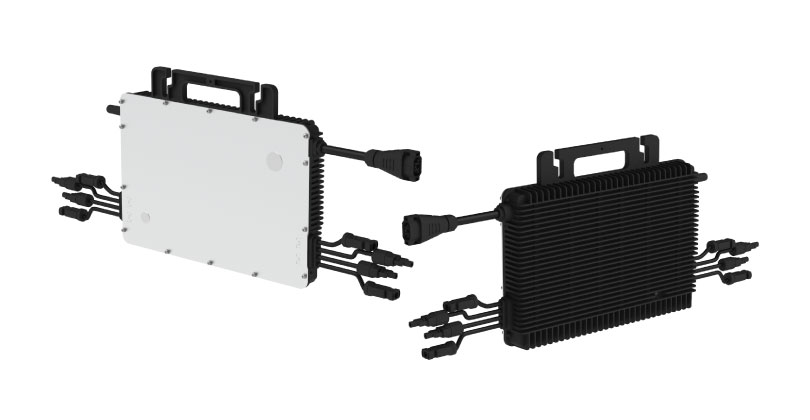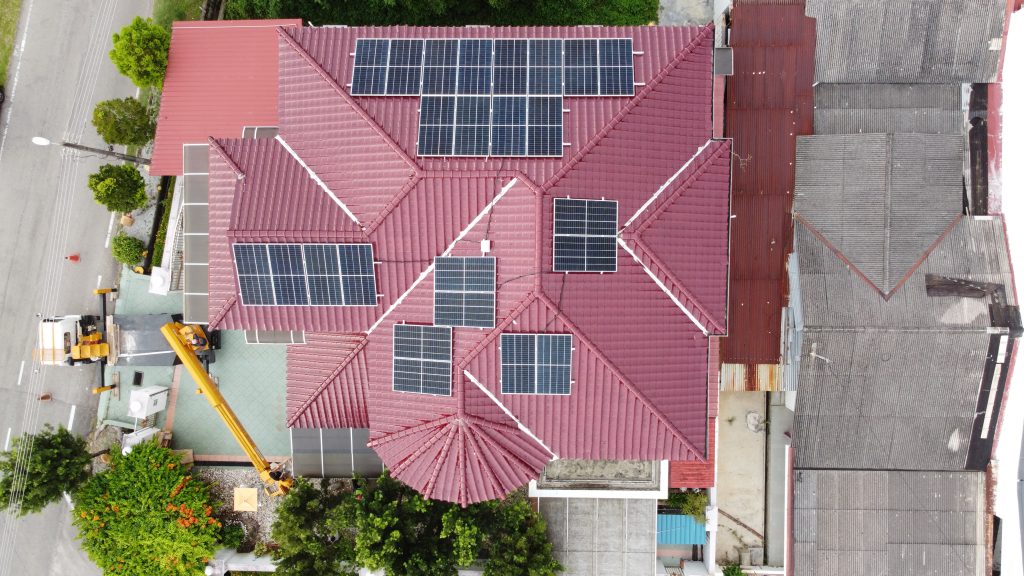Our residential solar PV system provider, Solaroo offers an innovative PV system equipped with micro-inverters which provides 10-30% more energy harvest with unparallel safety compared to a regular string inverter system.
The inverter of your solar PV system is a key component to ensure you system is running well. An inverter’s primary purpose is to convert the electricity produced by solar panels from direct current (“DC) to alternating current (“AC”) so that it can be utilized for powering your home.
In general, there are two main types of inverters, Microinverters and String inverters.
Microinverter vs String Inverter: What’s the difference?
Microinverters and string inverters differ primarily in their location and timing of converting DC energy to AC energy.
1. Safety
A string inverter is mounted usually on the ground floor and converts the electrical currents from all solar panels at a central location. Microinverters are smaller and mounted on the back of the solar panels where they convert the direct current (DC) to alternating current (AC) at the source, making microinverters a much safer option.
With microinverters, there is no build-up of DC voltage as the conversion from DC to AC occurs at the source. Instead of converting DC to AC at one single source (string inverter), it is well spread out between the numerous micro inverters, operating at a lower voltage compared to string inverters.
2. Greater performance
As each panel is connected in parallel to a microinverter, the performance of each panel is independent, providing better performance in situations where some panels might be partially shaded or experience varying conditions.
Referring to the house above, with panels facing every angle, there will be instances where the sun is shinning on certain panels whereas some others may not receive the same sunlight. With microinverters, as each panel is independent, the generation will be optimized.
This independence in performance is a key advantage of microinverters, offering more flexibility and efficiency in real-world scenarios compared to traditional string inverters.

Pictured above, with a microinverter setup, only the affected solar panel’s output is affected when there is shading as compared to the string inverter, the production of the entire PV system is determined by the performance of the panel with the lowest output
Pictured above, with a microinverter setup, only the affected solar panel’s output is affected when there is shading as compared to the string inverter, the production of the entire PV system is determined by the performance of the panel with the lowest output.
3. Better performance monitoring and troubleshooting
Our experienced maintenance team can monitor and identify any fault using the individual panel-level monitoring. This speeds up troubleshooting instead of having to check every panel to identify the fault.
This further allows us to have panel-level shutdown capabilities when needed, allowing us to isolate and shut down the output of a specific solar panel if needed. Further enhancing safety in case of a malfunction or maintenance requirement
4. Modular design
Microinverters make it easier to scale and expand solar power systems. Additional panels with microinverters can be seamlessly integrated into an existing system without the need for major redesign or modification. Most of the time, there will be no change to the internal existing cabling works.
This is a great advantage for our customers whose electricity usage pattern may change overtime with the addition of an EV cars, removal of electricity subsidy, renovation etc. Having the flexibility to add more panels in the future will help to hedge against the ever-increasing cost of electricity.
Find out more about Solaroo’s microinverter solar PV system here. Or get a proposal for your home by submitting the form here.



